We turned off the main road and found ourselves in a veritable mass of four-wheel drive vehicles. Evidently, this was not a land with good roads. Not yet, at least.
In fact, the road between the capital and the second-largest city in this country has an aptly-named “Tunnel of Death”—an unfinished and unventilated five-kilometre-long tunnel that vehicles are allowed to use if they do not mind its attendant hazards.
Welcome to Tajikistan.
Almost immediately, the three of us were besieged by a host of people. A woman carrying a baby began touching my arms. She wanted money. Most of the others, however, were simply asking us where we wanted to go, pleading with us to take a look at their vehicles.
A Swiss, a Kuwaiti, and a Singaporean together at a shared taxi terminal in Dushanbe—we must have been a sight for many of the people there.
Eventually, after some bargaining and waiting, we settled for a decent-looking Toyota Land Cruiser, paying 280 somoni each for the trip to the city of Khorog. We were headed to the provincial capital of the Gorno-Badakhshan Autonomous Region, one of the remotest regions in an already-remote country. Khorog was to be our gateway to the Pamir mountains and the famous Soviet-built Pamir Highway that snakes through them.
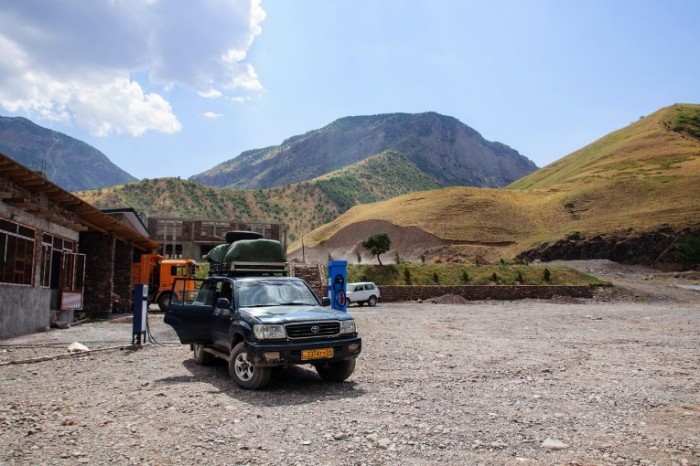
Sharing the cramped quarters of the vehicle with five other Tajiks, we began our fifteen-hour journey to the very region that Marco Polo himself passed through en route to China. It was to be a long bumpy ride.
The scenery as we headed eastward from Dushanbe was stark. With more than half its territory at least 3000 meters above sea level, the rugged landscape of Tajikistan brings to mind the imagery of an unfolded ball of crushed paper. Much of the land seemed arid and dusty in the summer, with grey and brown hues dominating the view out of the window.
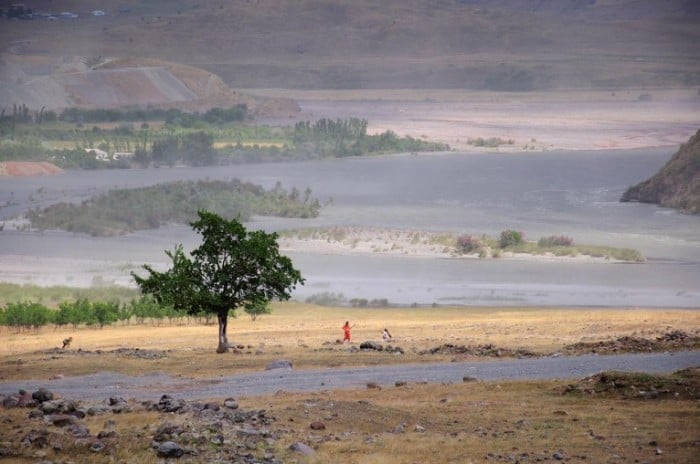
We stopped a number of times along the way. Sometimes for food, others times for people to answer the call of nature. Once, we stopped by a little shack in a town along the way so that the driver could pump his tyres. Seizing this chance to stretch my legs, I got out of the vehicle. I soon noticed a group of men sitting at the nearby bus stop staring at me and talking among themselves. Was it my foreignness—my physical appearance—that spurred such excitement? Or was it because of what was written on my T-shirt that I bought in Dushanbe?
Jigari man—literally, my liver—a term of endearment used by Tajiks.
I do not profess to speak Tajik, but I do at least know how to convey that in Tajik: zaboni Tojiki namedonam. Nevertheless, this was scant consolation to the fact that I could barely communicate with my fellow passengers and my driver. They spoke Tajik and Russian, while I spoke neither, save for a cursory knowledge of various pleasantries in both languages.
Sadly, I know nothing about their lives, neither do they about mine. I can only hope that my hearty smile has left at least a positive impression on them, wherever they are today.
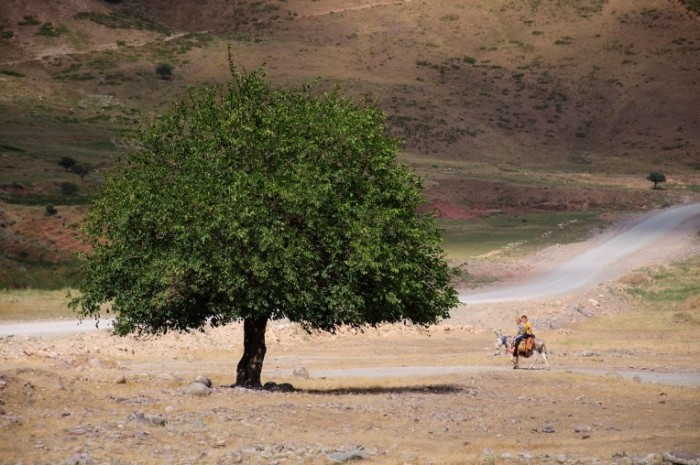
About halfway through our journey, Michael, my Swiss travelling companion, proudly announced that we were about to reach the border with Afghanistan. The GPS function on his phone was still working. As the road started to climb, I got excited. Afghanistan was just right ahead, the mysterious country that everyone hears about in the news, yet knows very little about.
My first glimpse of Afghanistan came as our vehicle descended into the valley of the Panj River, which demarcates most parts of the Tajik-Afghan border. Tall mountains line both sides of the river, staggering monuments to the power of plate tectonics. Nature here was at its rawest and arguably finest.
I fired my camera away, knowing full well that the resultant photos would not do justice to the sheer experience of being at the foot of these majestic mountains.
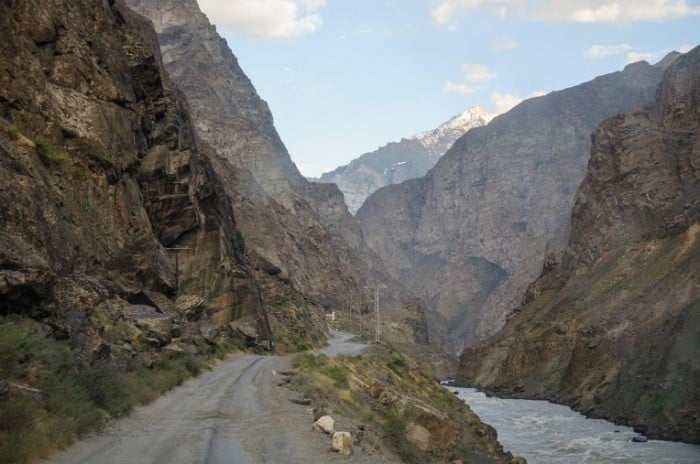
There is very little here to mark the difference between Tajikistan and Afghanistan. The gravel road that runs along the Tajik side of the river and the dirt track on the Afghan side were the main points of comparison. Apart from the military checkpoints that we had to stop at, there were no other indications of statehood. This place is simply one continuous mountain range.
At one of the checkpoints, Abdullah, my Kuwaiti travelling companion, was summoned out of the vehicle by the soldiers. It turned out that they wanted a selfie with him after looking at his passport photo, which showed a luscious beard that he no longer possessed.
Interestingly, there have been reports of the Tajik government forcing men to shave their beards, as part of a general campaign against the influence of Islam in Tajik society. I certainly did not recall seeing any beards in Dushanbe. Given the supposed dearth of beards in Tajikistan, the prospect of a bearded man must have been a huge novelty for those Tajik soldiers.
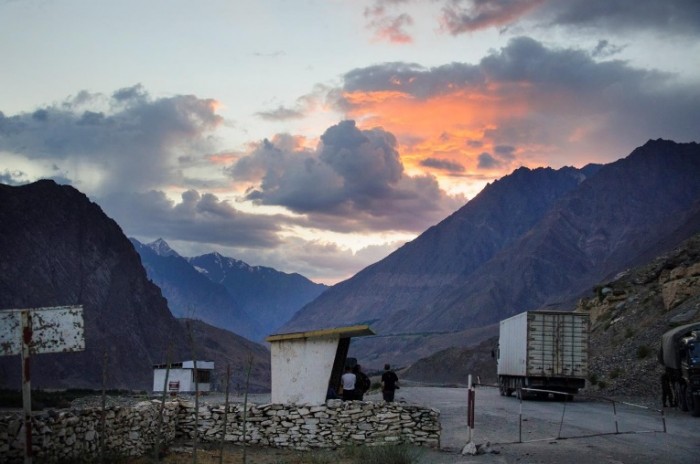
Day soon turned into dusk as we continued along the Panj River. As part of the egalitarian system Michael, Abdullah and I had of taking turns to sit in the front seat, I finally got my turn at the most comfortable spot in the vehicle.
It was then that the driver started playing Chinese music on the stereo, much to my pleasant surprise. Apparently, he got the music from a Chinese truck driver—one of the legions who ply their mechanical behemoths along the Pamir Highway from China all the way to Dushanbe. Indeed, seeing the many Chinese trucks precariously manoeuvring the windy road along the Tajik-Afghan border, I was left with no doubt regarding the expanding Chinese economic influence all around the world. There is simply nowhere that they cannot go.
The final stretch of our journey was done in near-absolute darkness. Even when we passed through villages, I could usually only see a handful of lights. This was largely a world where the natural cycles of daylight and nighttime still dominate the lives of its inhabitants.
Unsurprisingly, the fatigue of the long drive and the darkness of the night combined to lull me into sleep. All I remembered about the last hours of my journey was a hazy whirl of sensations, probably caused by the bumps on the gravel road and the discomforts associated with sleeping upright.
We reached Khorog around midnight and our driver dropped us off at a guesthouse that he recommended. After bidding our fellow passengers goodbye, we proceeded to plop ourselves in bed. There was definitely no way more fitting to conclude our long ride from Dushanbe than with a good night’s rest.
After all, our journey through the Pamirs was just only beginning.
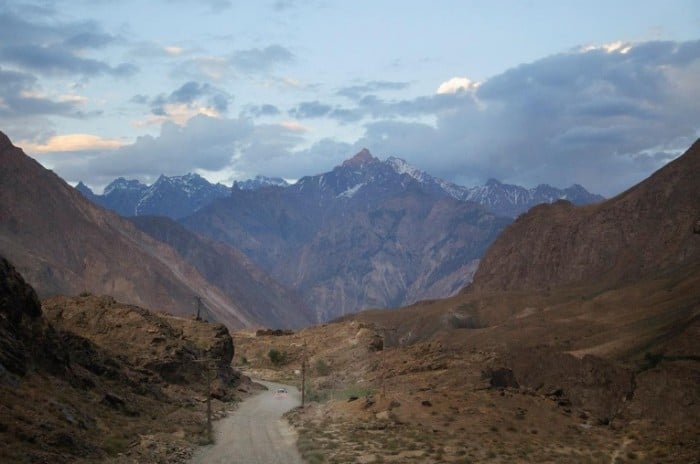
Also Read: 6 Things to Love About Tajikistan’s Pamir Mountains





